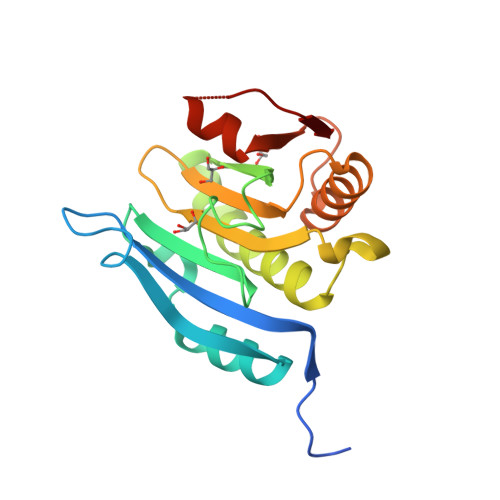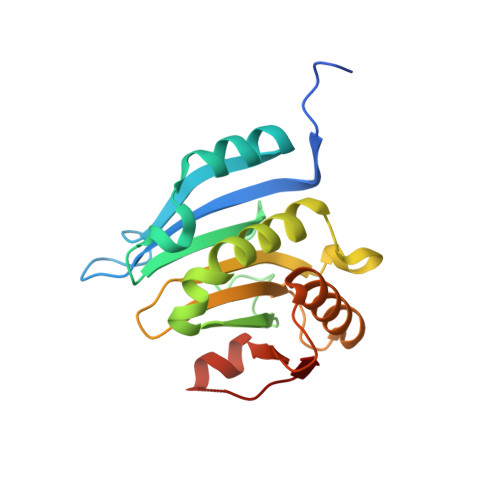Water-Bridge Mediates Recognition of mRNA Cap in eIF4E
Lama, D., Pradhan, M.R., Brown, C.J., Eapen, R.S., Joseph, T.L., Kwoh, C.K., Lane, D.P., Verma, C.S.(2017) Structure 25: 188-194
- PubMed: 27916520
- DOI: https://doi.org/10.1016/j.str.2016.11.006
- Primary Citation of Related Structures:
5GW6 - PubMed Abstract:
Ligand binding pockets in proteins contain water molecules, which play important roles in modulating protein-ligand interactions. Available crystallographic data for the 5' mRNA cap-binding pocket of the translation initiation factor protein eIF4E shows several structurally conserved waters, which also persist in molecular dynamics simulations. These waters engage an intricate hydrogen-bond network between the cap and protein. Two crystallographic waters in the cleft of the pocket show a high degree of conservation and bridge two residues, which are part of an evolutionarily conserved scaffold. This appears to be a preformed recognition module for the cap with the two structural waters facilitating an efficient interaction. This is also recapitulated in a new crystal structure of the apo protein. These findings open new windows for the design and screening of compounds targeting eIF4E.
Organizational Affiliation:
Bioinformatics Institute, A(∗)STAR (Agency for Science, Technology and Research), 30 Biopolis Street, #07-01 Matrix, Singapore 138671, Singapore. Electronic address: dilrajl@bii.a-star.edu.sg.

















